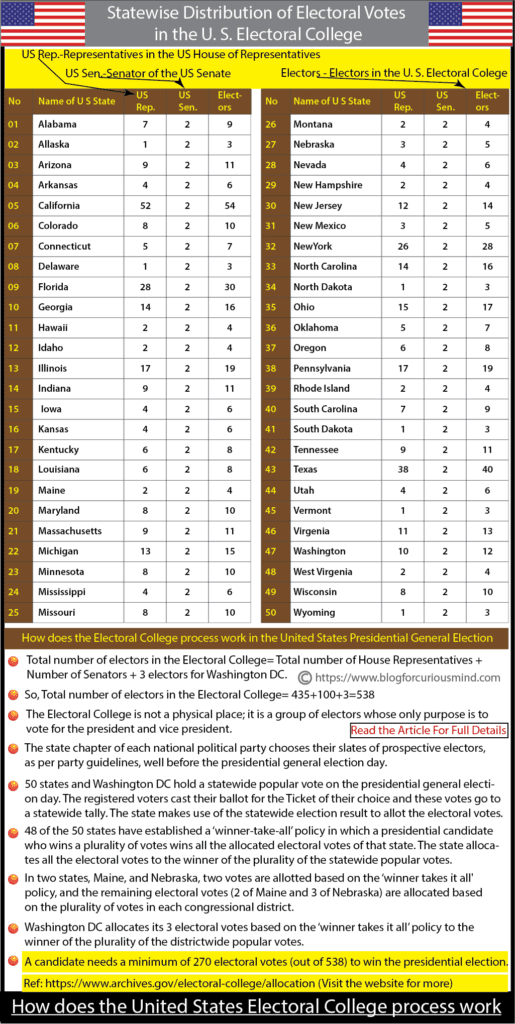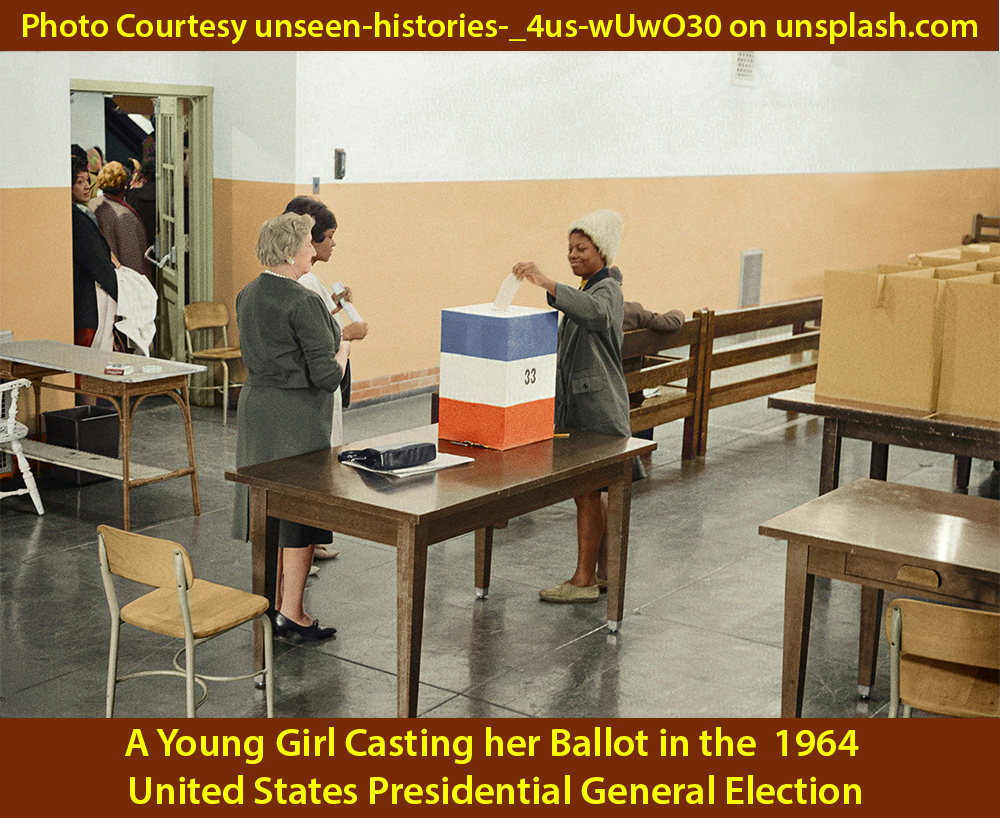Introduction
When we think of the presidential election in the United States, we presume that the presidential candidate who secures the nationwide maximum popular votes will win the election to become the president-elect. However, it is not so. This is where the role of the Electoral College in the presidential election comes into the picture.
The presidential candidate who secures the majority Electoral College votes is declared president-elect. In some instances, the presidential candidate loses the popular vote but wins the election by obtaining a majority of Electoral College votes.
What is the Electoral College and its role in the election of the American President? We will discuss this in the following paragraphs.
Meaning of Electoral College
The Electoral College is not a physical college like the one you went to study. It is a grouping of electors assembled for the sole purpose of voting for president and vice president. An Electoral College is formed for each presidential election as guided by the Constitution of the United States. The Electoral College members are known as ‘electors.’

The Electoral College works in three steps:
- State-wise selection of electors.
- State-wise meeting of the electors to cast their vote for the president and vice president.
- Counting and certifying the state-wise Electoral College votes by the Congress.
The number of electors allocated to each state equals its members in Congress, and the federal district of Washington DC is given 3 electors. This makes the total number of electors in the U.S. Electoral College 538. The state laws set the terms and conditions of eligibility for persons to be appointed as electors.
State-wise selection of electors
The state chapters of both Republican and Democratic parties select their slates of potential electors in consultation with their respective national parties. Thus, the presidential candidate of both national parties has their own unique slate of electors in each state and Washington DC.
Working process of the Electoral College
On the presidential election day, the registered voters cast their ballot for their choice of ticket (Presidential and Vice-presidential candidates). However, the states use the votes for allocating the electoral votes.
In 48 states, the state laws regarding the ‘Electoral College’ have authenticated a ‘winner-take-all’ policy. This policy allocates all the electoral votes of the state to the presidential candidate winning the plurality of statewide popular votes, meaning their slate of electors will get to vote in the Electoral College.
Washington DC follows the ‘winner-take-all’ policy and allocates its 3 electoral votes to the presidential candidate winning the plurality of districtwide popular votes.
The two states Maine and Nebraska, follow the ‘winner-take-all’ policy for allocating two electoral votes each to the presidential candidate winning the plurality of the respective statewide popular votes. The remaining electoral votes, 2 of Maine and 3 of Nebraska are allocated based on the plurality of the popular votes in the respective congressional districts.
The electors of the Electoral College of every state assemble at their respective state capitol on the first Tuesday after the second Wednesday of December and cast their votes for the president and vice president. The votes are sealed in a box and forwarded to the US Congress for final tallying and certification.
The Senate and House of Representatives jointly meet on the 6th of January, and count, tally, and tabulate the electoral votes received from 50 states and Washington DC. The meeting is normally presided over by the outgoing vice president.
The joint meeting of Congress certifies the voting results of the Electoral College. The presidential candidate receiving 270 or more electoral votes out of 538 will become president-elect. The president-elect and vice president-elect will take the oath of office on Presidential Inauguration Day, the 20th of January, and assume the offices of the President and Vice president of the United States.
Visit https://www.usa.gov/electoral-college to know more about Electoral College.
You may watch this YouTube video on the topic.
You may like to read the following articles:
Who Elects the President of the United States

